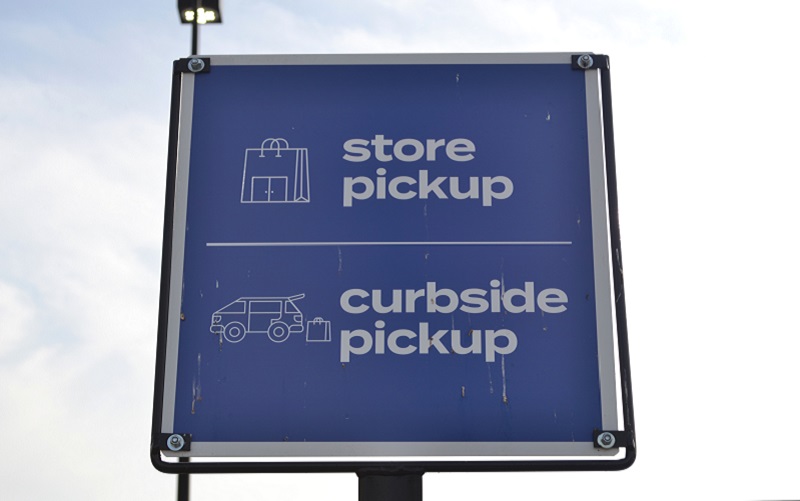In many parts of the world, but unfortunately not all, consumers are seeing a light at the end of the tunnel. After nearly 15 months of minimizing and even avoiding shopping trips to protect their health, consumers are making their way back to the outside world. But while many of us are venturing out again, many of the shopping habits we picked up during the pandemic or accelerated aren’t going away. According to a survey conducted by Digital Commerce 360 and Bizrate Insights[1], «64% of respondents planned to place more orders online in the next six months, 33% expect to order online and pick up in-store more often and 27% plan to order online and use drive-up or curbside services to pick up from a store more than in the previous six months.”
In our world of unified commerce where consumers expected personalized customer-centric experiences across channels, businesses need to employ a few key strategies to succeed going forward.
Continued Investment in Speed and Convenience Options
In order to meet customer expectations during the pandemic, retailers quickly implemented fulfillment options such as buy online pickup in store (BOPIS) and curbside pickup. These offerings not only gave consumers safer ways to get products, but also made shopping more convenient. As a result, fulfillment flexibility is a must have – consumers today expect to be able to check store inventory online, make the online purchase and then pick up items in-store, curbside, or have them delivered to their home.
Retailers that made investments in their omni-channel options saw tremendous growth. Curbside pickup sales at Target grew 600% year over year. The retail chain’s ecommerce sales grew an explosive 145% in its fiscal year ended Jan. 30, 2021[2]. Walmart’s online sales grew 79% for its fiscal year 2021, which ended on Jan. 29[3].
Retailers must continue to expand omni-fulfillment options, curbside pick-up, BOPIS, as well as same-day delivery, while simultaneously investing in operational efficiencies. For example, while more than 50% of major retailers now offer curbside pickup, businesses need to differentiate themselves by offering a seamless and effortless fulfillment experience. [4] Companies can ensure that they have real-time inventory visibility, the right alerting mechanism to ensure customers are informed when items are ready for pick-up, and an easy customer check-in process so customers aren’t left waiting for their order. Customers utilizing these new omni-fulfillment options expect seamless and efficient processes from click to collect.
Make Stores a Destination
The success at Target, Walmart, and Best Buy in the last year showed us that while e-commerce grew 44% YoY in 2020, stores were at the heart of this growth[5]. Of the nearly $200 billion in new e-commerce spending in the U.S. in 2020, $37.44 billion came from click and collect [6].
Stores have to offer consumers differentiated experiences to stay relevant and to become more than a place for click and collect and curbside pick-up orders. The stores of tomorrow need to unify the online and offline worlds. If you’ve been to an apparel, electronics, or even a big box hardware store, customers come inside to touch materials, try on clothes, see the size of items – i.e., fridge or a TV – and see how items look side by side.
Stores give customers opportunities to see things in person and speak to expert staff who can answer questions. A great example of differentiated experiences is the makeup counter. Customers can easily purchase mascara, foundation and eyeshadow online, but in-store beauty experts are able to demonstrate products in real-time, share tips on the right product for an individual’s skin type, and provide insider deals to customers who walk in the door. The stores of tomorrow can’t just be a place to buy goods, but they must offer consumers with delightful and personalized experiences.
Focus on Profitability
During the pandemic-induced e-commerce boom, retailers invested in e-commerce speed and convenience options to meet customer preferences. These investments certainly helped retailers see exponential e-commerce growth as referenced above. However, while many essential businesses such as Target, Walmart, and Costco saw sales go up as they were allowed to stay open and, in many cases, they had invested in omni-channel capabilities prior to the pandemic, others didn’t fare as well. Increased costs of delivery, increased labor costs, warehousing and higher return rates, along with investment in e-commerce technologies quickly added up. To offset these expenses, retailers need to improve e-commerce operating costs.
E-commerce doesn’t have to reduce margins or increase costs. In fact, when done correctly, new omni-channel options can accelerate business to new financial heights. Click and collect is a win-win for both businesses and customers. Retailers can reduce shipping costs and last-mile costs, while consumers enjoy the speed, convenience, low cost, and now safety of this shopping method. Unlike curbside pickup and other fulfillment options, the beauty of click and collect is that customers have the opportunity to browse the store and purchase additional items when they pick-up their online order.
Change isn’t always easy. But with a few small steps, businesses can set themselves up for success in a post-pandemic world. Blue Yonder can help businesses become more competitive by offering speed and convenience options, creating engaging in-store experiences that unify the online and offline worlds, and optimizing fulfillment.
[1] https://www.digitalcommerce360.com/2021/04/27/more-than-50-of-large-retail-chains-offer-curbside-pickup/
[2] https://www.digitalcommerce360.com/2021/03/02/omnichannel-fuels-targets-145-growth-in-ecommerce/
[3] https://www.digitalcommerce360.com/article/omnichannel-retail-strategies/
[4] https://www.digitalcommerce360.com/2021/04/27/more-than-50-of-large-retail-chains-offer-curbside-pickup/
[5] https://www.digitalcommerce360.com/article/us-ecommerce-sales/
[6] https://www.emarketer.com/content/click-collect-already-popular-option-finds-new-gear

